iPhone 8 Plus vs. Samsung Note8: which has the better cameras?
Note: This article was first published on 2nd October 2017.
Another year, another smartphone camera showdown, but this year is different. The iPhone 8 Plus and Galaxy Note8 cameras are incrementally better, as expected. But the software plays a surprisingly big role in this year’s upgrade.
Spec for spec
The two smartphones both ship with dual 12MP rear cameras, but that’s where the similarity mostly ends.
The Samsung Galaxy Note8 has faster lenses; f/1.7 for the wide-angle and f/2.4 for the telephoto. The Apple iPhone 8 Plus has an f/1.8 for the wide-angle and an f/2.8 for the telephoto. The Note8 has optical image stabilization (OIS) on both rear cameras, while the iPhone 8 Plus only has OIS on the wide-angle.
When it comes to sensor size, Apple is coy with the details. It’ll only say that the iPhone 8 Plus camera sensors are bigger than the iPhone 7 Plus’, have a new color filter and feature deeper pixels. The Note8 has a 1/2.55” sensor for the wide-angle camera, and a similar 1/3.6” sensor for the telephoto.
The Note8 is the first Samsung smartphone that gains the ability to shoot portraits with simulated background blur, also known as bokeh. The iPhone 7 Plus was Apple’s first phone to have that feature, and the iPhone 8 Plus layers a new feature called Portrait Lighting. The beta feature simulates studio lighting on subject faces, with four effects to choose from.
iPhone 8 Plus | Samsung Galaxy Note8 | |
|---|---|---|
12MP wide-angle and telephoto cameras | 12MP wide-angle and telephoto cameras | |
|
| |
Unknown |
| |
Wide-angle camera | Wide-angle and telephoto cameras | |
DCI-P3 | sRGB | |
Quad-LED True Tone with Slow Sync | High CRI LED | |
Yes | Yes | |
|
| |
|
|
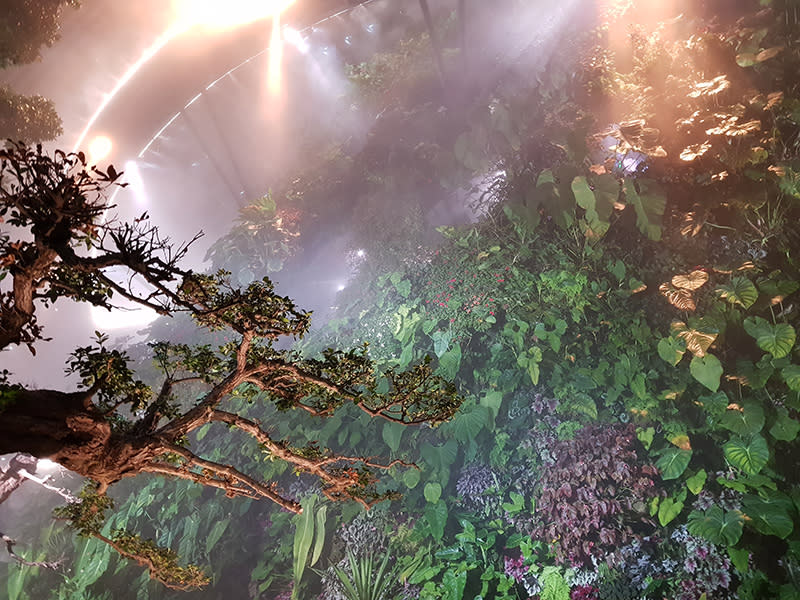
They’re both good, but here’s the twist
If you own either an iPhone 8 Plus or Galaxy Note8, you’ll be very happy with the still photos from either of them. But I’d pick the iPhone 8 Plus as the better camera, and not because it produces the best image all the time — it doesn’t — but because it has the better software.
Pixel for pixel, you can re-read my camera comparisons of the iPhone 7 Plus and the Galaxy S7 from last year and you’ll find many of the same characteristics repeated this year.
For example; the iPhone 8 Plus is soft on image detail, even from lower ISO settings like ISO 400 and onwards. The Note8’s images actually contain more image detail, and although its photos have colors that are just as nice as the iPhone 8 Plus, it does oversaturate colors occasionally.
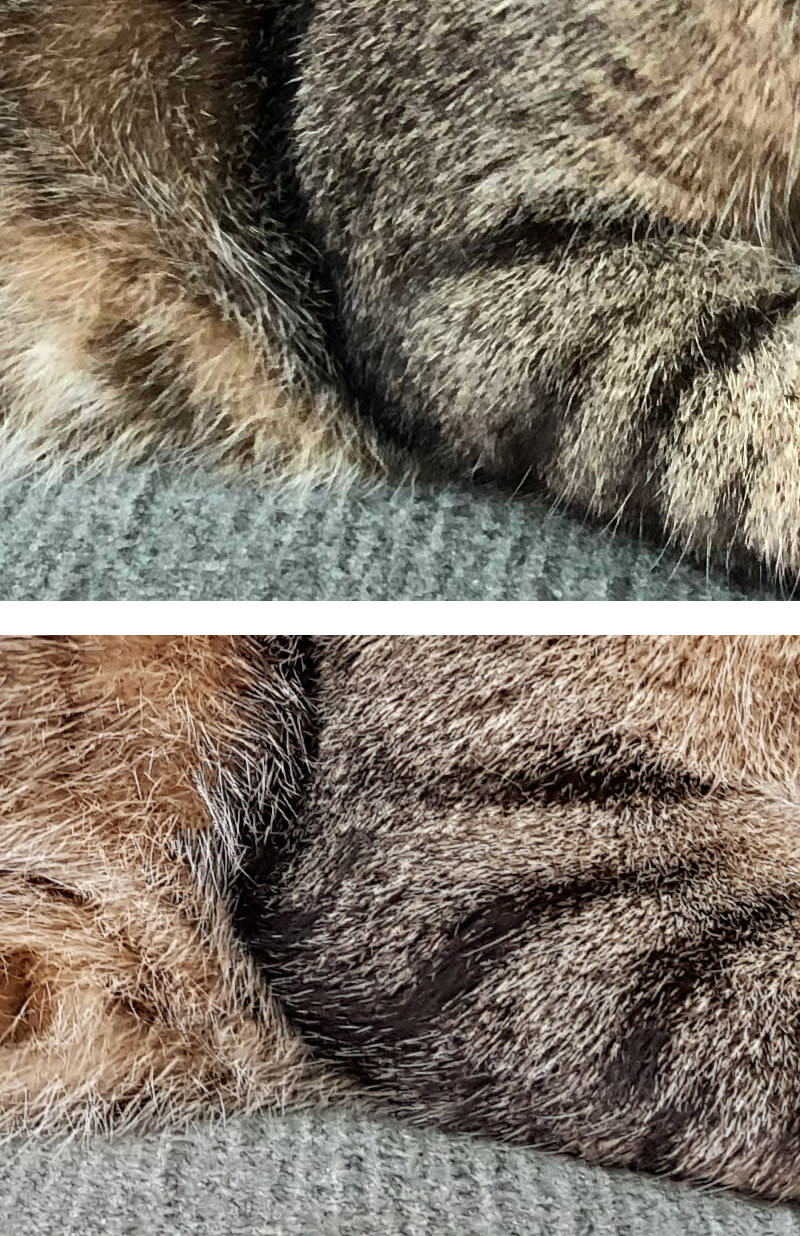
However, the iPhone 8 Plus’ software has gotten better faster, and it’s the twist that makes the difference. HDR, for one, is better on the iPhone 8 Plus and smarter at knowing when to shoot in HDR, capturing a wider dynamic range with more detail.
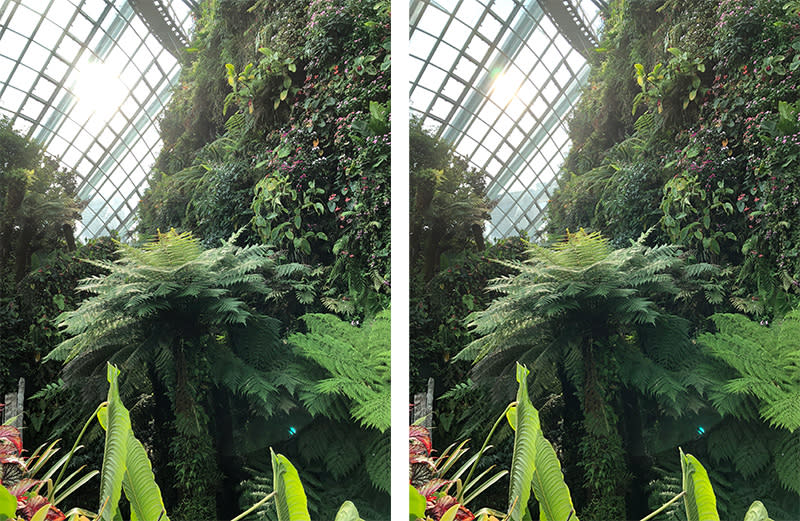
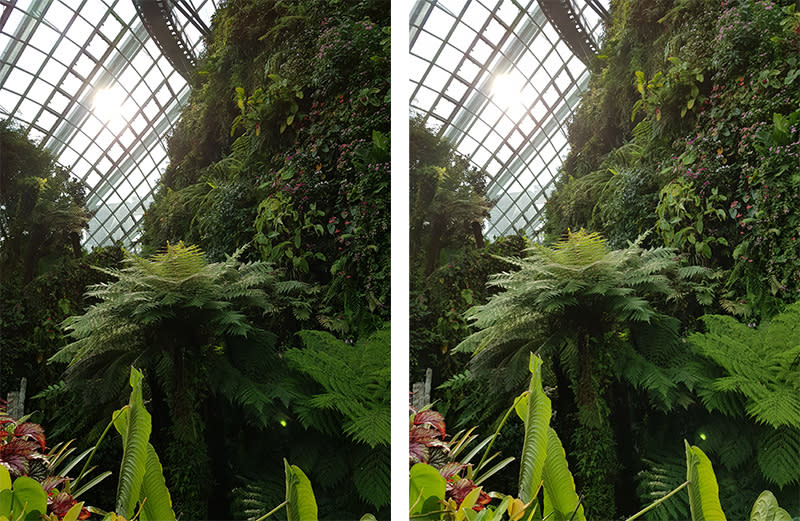
The Note8 gains the same background blur simulation the iPhone 7 Plus had, and adds the ability to adjust the intensity of the background blur, which the iPhone 8 Plus can’t do. Both background blur effects are excellent, and I love shooting people with them.
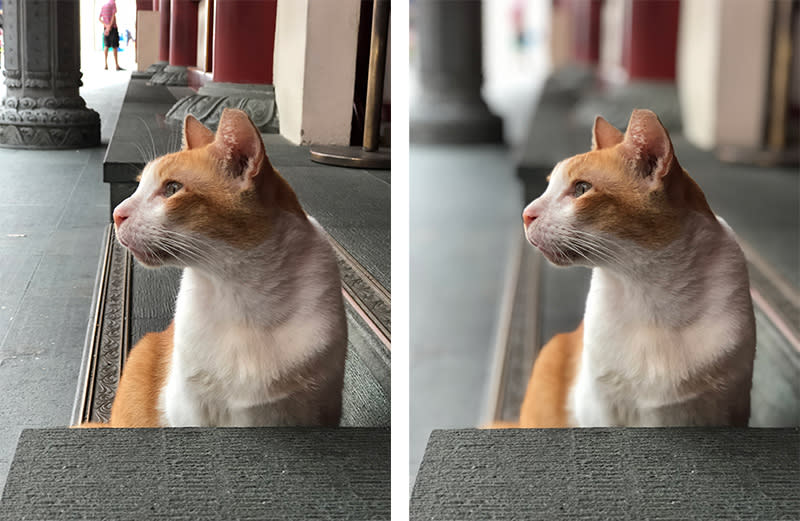
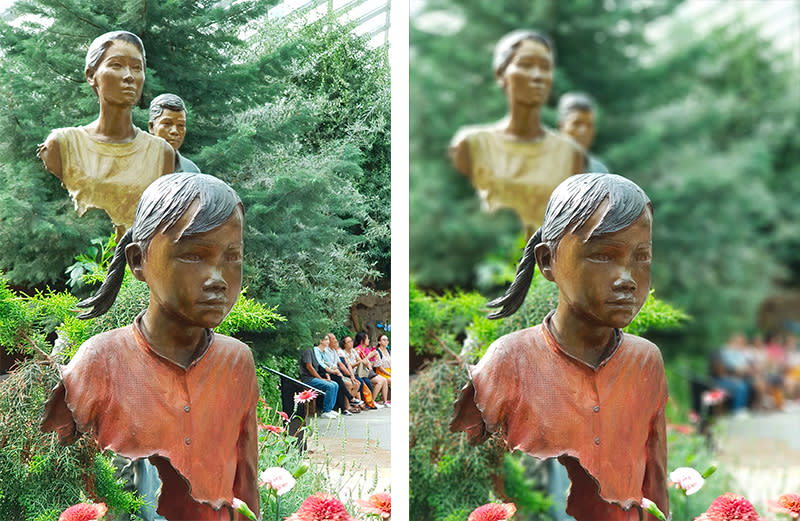
The iPhone 8 Plus, however, adds a new beta featured called Portrait Lighting, which mimics the effects of studio lighting and raises Portrait Mode up another level.
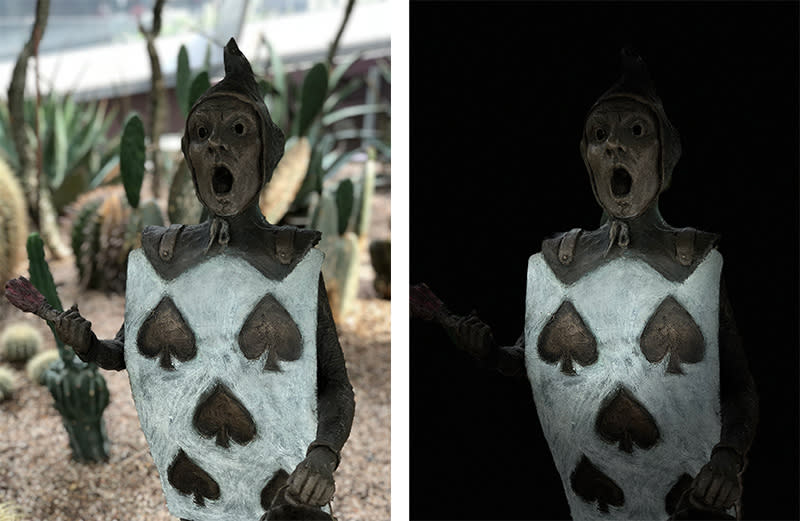
Flash photography looks better on the iPhone 8 Plus thanks to True Tone and the additional of slow sync. While the Note8 looks like it can also shoot with slow sync flash, iPhone 8 Plus’ flash output is more subtle and not as glaring. Don’t expect miracles though, on-camera flash still looks bad compared to bounce or off-camera flash, but the iPhone 8 Plus makes flash at least platable.
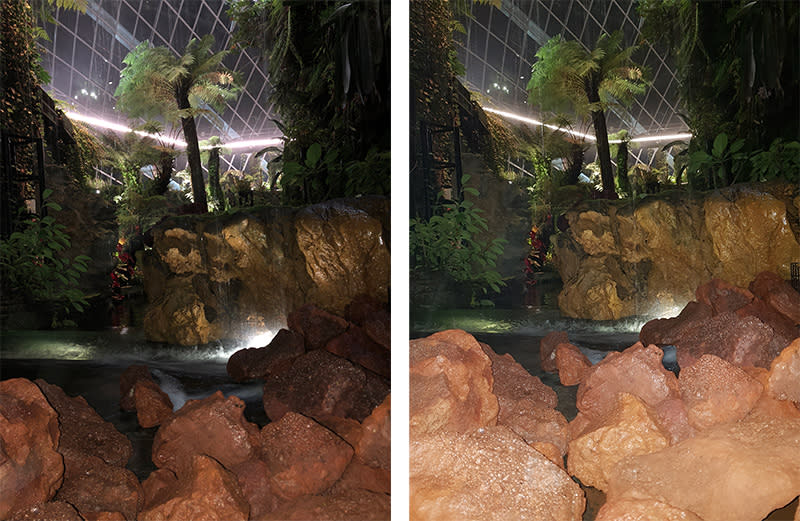
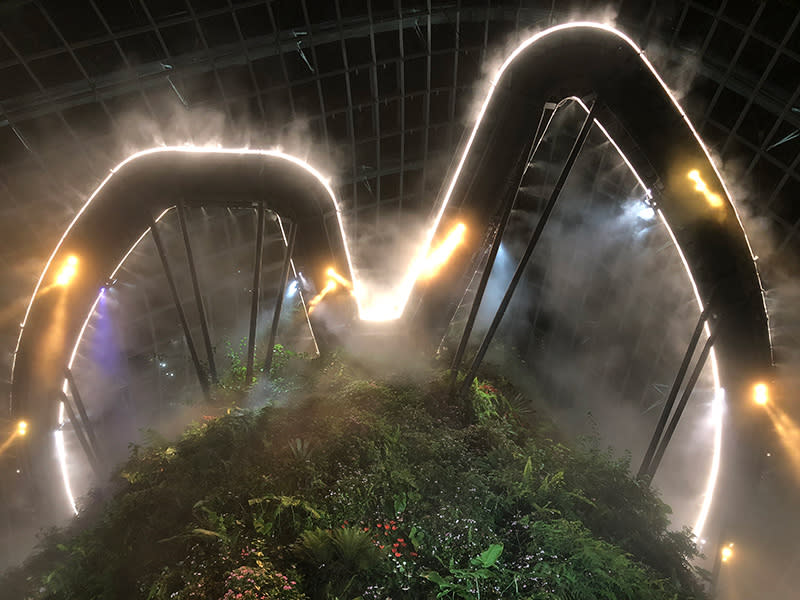
Updated 6/10/17: Added additional digital zoom comparison.
The Note8 also does the same zooming ‘trick’ that the iPhone 8 Plus does. Both cameras can override your decision to shoot with the telephoto lens, especially in low light. When you tap to shoot with the zoom lens, what the phone really does is snap a photo with the wide-angle, then crop and enlarge it instead.
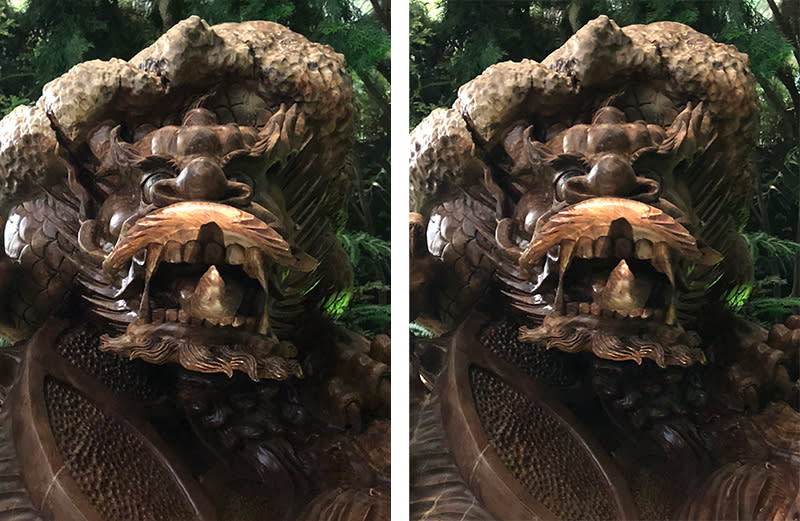
I can understand why the iPhone 8 Plus does it, after all, it only has OIS on the wide-angle and not the telephoto. But the Note8 has OIS on both cameras, which should help to stabilize the shot. And the effect on the Note8 is noticeably poorer; image artifacts smudge the details resulting in a lower resolution photo.
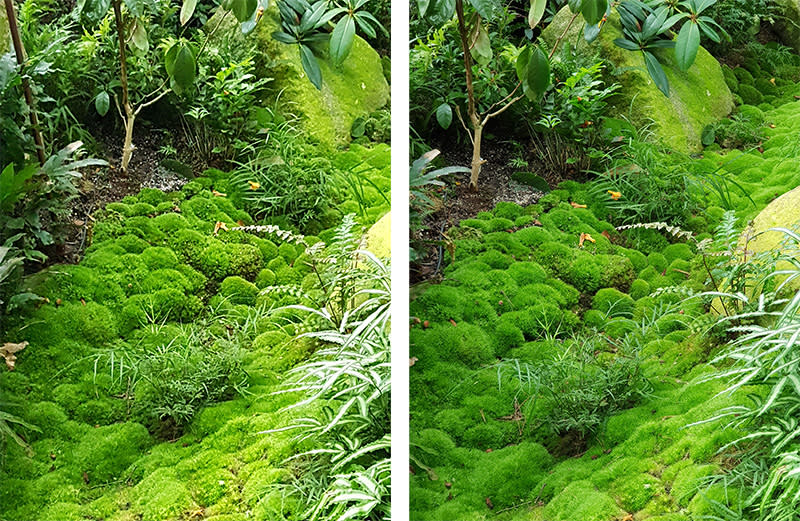
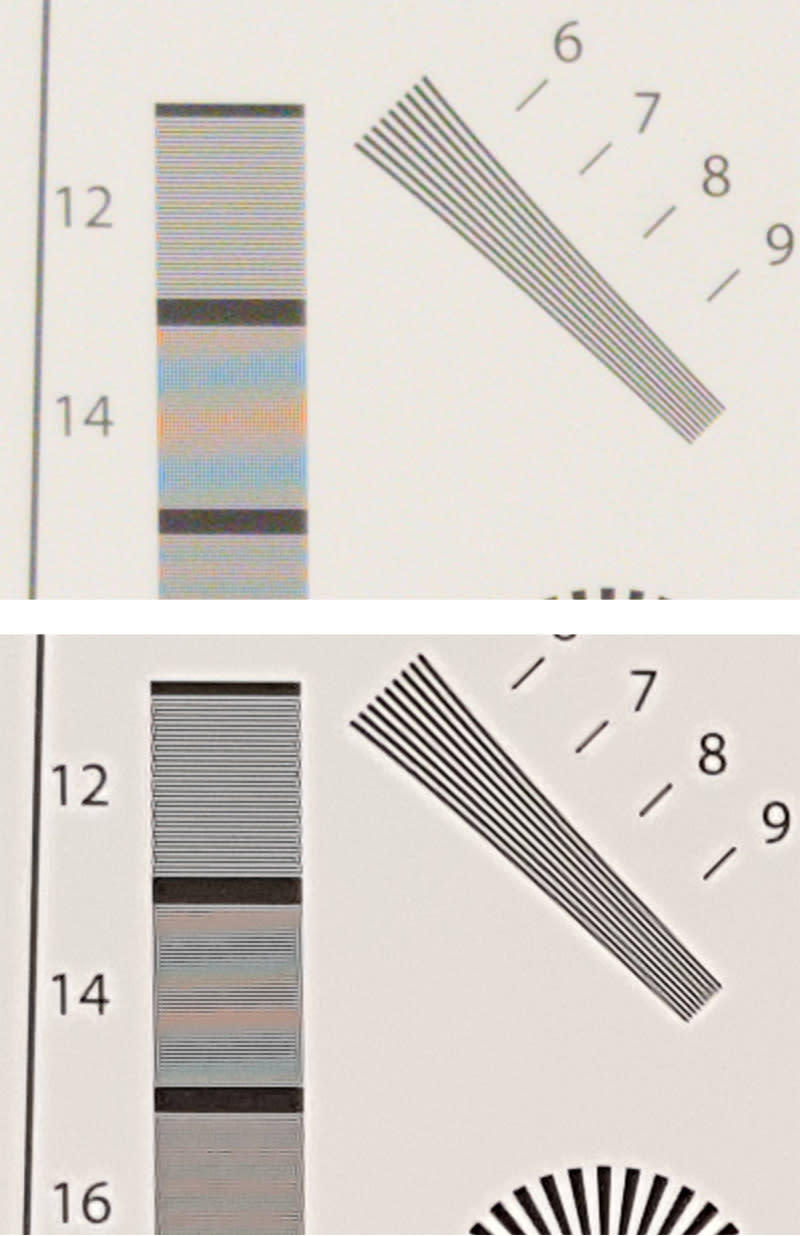
The iPhone 8 Plus gives you more options when shooting video; it shoots up to 4K/60p/30p, and even has an option for 4K/24p for film buffs (24fps is the traditional frame rate for film). At Full-HD, the iPhone 8 Plus shoots at 30p/60p, and slow-motion video at 1080p shoots up to a whopping 240fps. The Note8, on the other hand, shoots 4K, 1080p and 720p video at 30fps, with slow motion video at only 720p/240fps.
The iPhone 8 Plus’ videos tend to get noisy in low-light, but in good light they’re fine. Rolling shutter is reasonably controlled, and there’s some warping if you move around a lot. Otherwise, the optical image stabilization (OIS) on the wide-angle camera does a good job at keeping the shot steady. Unfortunately, the telephoto doesn’t have OIS (the iPhone X’s telephoto camera will) which results in shaky cam.
The Note8’s image stabilization is jerkier than the iPhone 8 Plus and results in jarring footage. Like the iPhone 8 Plus, the videos get muddy in low light. Both phones are good at automatically changing exposure when you move from dark to bright areas of a scene and vice versa. If I had to pick one for shooting video, I’d pick the iPhone 8 Plus, just like last year.
iOS 11 brings one more advantage to the iPhone 8 Plus; it saves images and movies in new file formats; HEIF (High Efficiency Image File Format) for images and h.265, or HEVC (High Efficiency Video Codec) for movies. These new formats cut files sizes by as much as half; JPEGs are an average of 4 to 5MB, while the same images in HEIF average 2MB.
Movie file sizes depend on resolution, subject and length, but I have a 20 second Full-HD video that’s 67.7MB, while the same video in HEVC weighs 30.8MB. My biggest 4K movie file takes up 337.8MB of space in the older h.264 codec, and its HEVC counterpart is less than half the file size at 153.6MB.
If you use Photos on macOS High Sierra, they’re transferred over in the new formats, saving you storage space on your iPhone and Mac. When you share these images and movies, however, iOS 11 is clever enough to convert them to JPEG and h.264, so other devices can read them.
Plus, you can create the same effects for Live Photos using Photos on macOS — Loop, Bounce, and Long Exposure — as you can on the iPhone, as well as edit Portrait Lighting. If you work on a Mac, owning an iPhone just makes more sense.

iOS is eating the camera world
Updated 6/10/17: Edited for clarity.
I thought I’d wrap this year’s camera showdown with the same words as I did last year: Both the iPhone 8 Plus and Note8’s cameras show incremental improvements over the previous year’s cameras, as they’ve done for years prior.
But the iPhone 8 Plus’ software practically leapfrogs over the Note8 this year, which lets it shoot photos with better HDR and metering. On-camera flash, while never as good as bounce or off-camera flash, is at least more palatable, thanks to True Tone flash, which cleverly adjusts color temperature and intensity based on its analysis of the scene. Flash also benefits from the additional of slow sync flash, which captures more of the background. While both the iPhone 8 Plus and Note8 can simulate background blur, the iPhone 8 Plus introduces Portrait Lighting, which takes its portraiture skills up a level.
The iPhone 8 Plus also saves more colors in the wider DCI-P3 color space, although you’ll need a compatible display to see it (most of Apple’s newest devices, like the iMac and MacBook Pro, support the color space). It shoots higher video resolution with 4K at 60fps, with a filmic option for 24fps, does higher-resolution slow-motion video at 1080p/240fps, and introduces new space-saving file formats and deeper integration with Photos for macOS High Sierra.
To be sure, the Note8 is also a very good camera when it comes to stills. I wish, for example, that the iPhone could (finally) capture as much image detail as the Note8. If you only focus on shooting photos with the Note8, you’ll be very pleased with the results, as the Note8 creates beautiful images. However, you’ll be in for a surprise when the Note8 overrides your decision to shoot with the optical zoom, and gives you a heavily compressed digital zoom instead.
If you need to use the flash, you’ll also find that it’s harsher than the iPhone 8 Plus’. Video, once again, is not the Note8’s strong point, it doesn’t have as many frame-rate options as the iPhone 8 Plus, and its video optical image stabilization is not as good as the iPhone 8 Plus’, especially if you move while shooting.
So while the Note8 has a singular strength, the iPhone 8 Plus is the better overall package, once again.
Software is going to become even more important for photography
Unless smartphones can squeeze much bigger sensors into those slim bodies or invent a sensor breakthrough, it seems we’ve reached the limits of what these small sensors can do, as image quality hasn’t dramatically improved year on year. Sensor size matters, the larger the sensor, the better the image, which is why full-frame DSLRs beat Micro Four Thirds mirrorless beat smartphones.
It’s likely why Apple and Samsung wisely capped the iPhone 8 Plus and Note8 at 12MP; the more megapixels, the smaller each individual photosite, the less light it can physically capture, and the more likely it’ll introduce more image noise and reduce dynamic range. It’s also likely why Apple chose to focus on software upgrades so heavily for this cycle.
The iPhone 8 Plus and iOS 11 mark an important inflection point for smartphone cameras, one where Apple pulls ahead because of its unique strength in owning both the hardware and software stack. As a result, I’m not sure that many, if any, smartphone or camera companies in the world can match what Apple is doing with the cameras in its iPhones.



